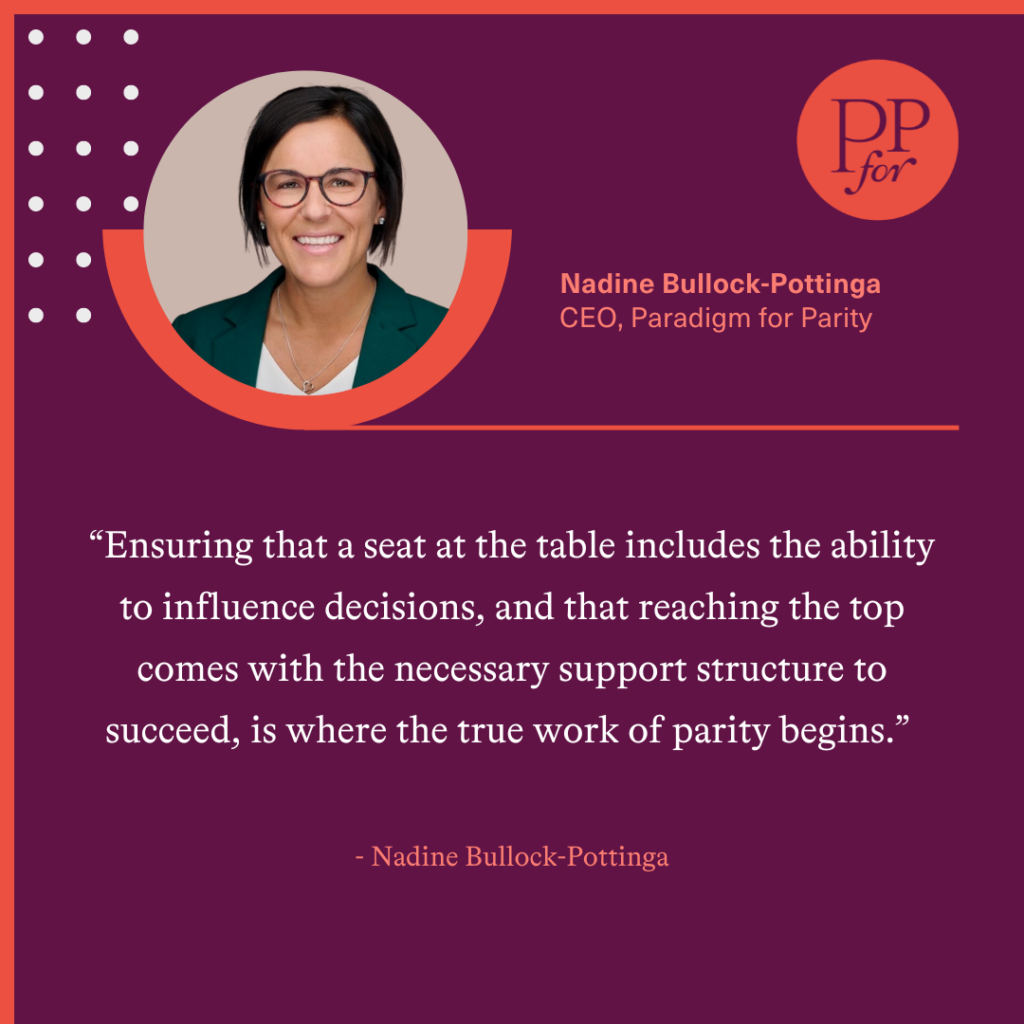Since starting as CEO at Paradigm for Parity a few months ago, I’ve been immersed in getting my mind around all the incredible work and meeting the dedicated individuals driving our mission forward. Ironically, this period also has me reflecting on the significance of our name—particularly the meaning of parity.
Yes, parity is equal representation of women and men, but achieving parity goes well beyond just numbers. What happens if we achieve equal representation but the balance of power does not change? What if culturally, organizations can’t support the needs that are now presented by having this equality dynamic? I’ve witnessed and experienced companies and organizations that check a numbers box, but don’t consider the deeper impacts to achieving parity. Ensuring that a seat at the table includes the ability to influence decisions, and that reaching the top comes with the necessary support structure to succeed, is where the true work of parity begins.
This issue feels more urgent than ever. Societal pressure on diversity initiatives, the increasing adoption of AI, the rollback of certain women’s rights, and even Melinda French Gates’ expanded investment in women and girls all highlight the pressing need to advance true gender parity now.

I’m so proud to be leading an organization that has developed a comprehensive action plan—a “paradigm”–to help companies achieve true gender parity. The Paradigm for Parity 5-Point Action plan tackles not only the symptoms but also the root causes of gender disparity in the workplace. These five actions, when implemented together, catalyze change and move companies along the path to parity:
By implementing these strategies, companies can move beyond metrics and cultivate a workplace culture that genuinely supports and sustains gender parity. We invite all organizations and individuals to join our 150+ companies from over 28 industries to join us in this effort. True gender parity is not just an aspiration, it can be reality.
As I look ahead to the next few months and the events and opportunities that define our Paradigm for Parity community, I am encouraged by the meaningful and lasting change we can drive together. We are ensuring that every woman in every seat has the power and opportunity to thrive and lead in the workplace.
by Nadine Bullock-Pottinga, CEO, Paradigm for Parity. Since starting as CEO at Paradigm for Parity a few months ago, I’ve been immersed in getting my mind around all the incredible work and meeting the dedicated individuals driving our mission forward. Ironically, this period also has me reflecting on the significance of our name—particularly the meaning of parity. Yes, parity is equal representation of women and men, but achieving parity goes well beyond just numbers. What happens if we achieve equal representation but the balance of power does not change? What if culturally, organizations can’t support the needs that are now presented by having this equality dynamic? I’ve witnessed and experienced companies and organizations that check a numbers box, but don’t consider the deeper impacts to achieving parity. Ensuring that a seat at the table includes the ability to influence decisions, and that reaching the top comes with the necessary support structure to succeed, is where the true work of parity begins. This issue feels more urgent than ever. Societal pressure on diversity initiatives, the increasing adoption of AI, the rollback of certain women’s rights, and even Melinda French Gates’ expanded investment in women and girls all highlight the pressing need to advance true gender parity now.